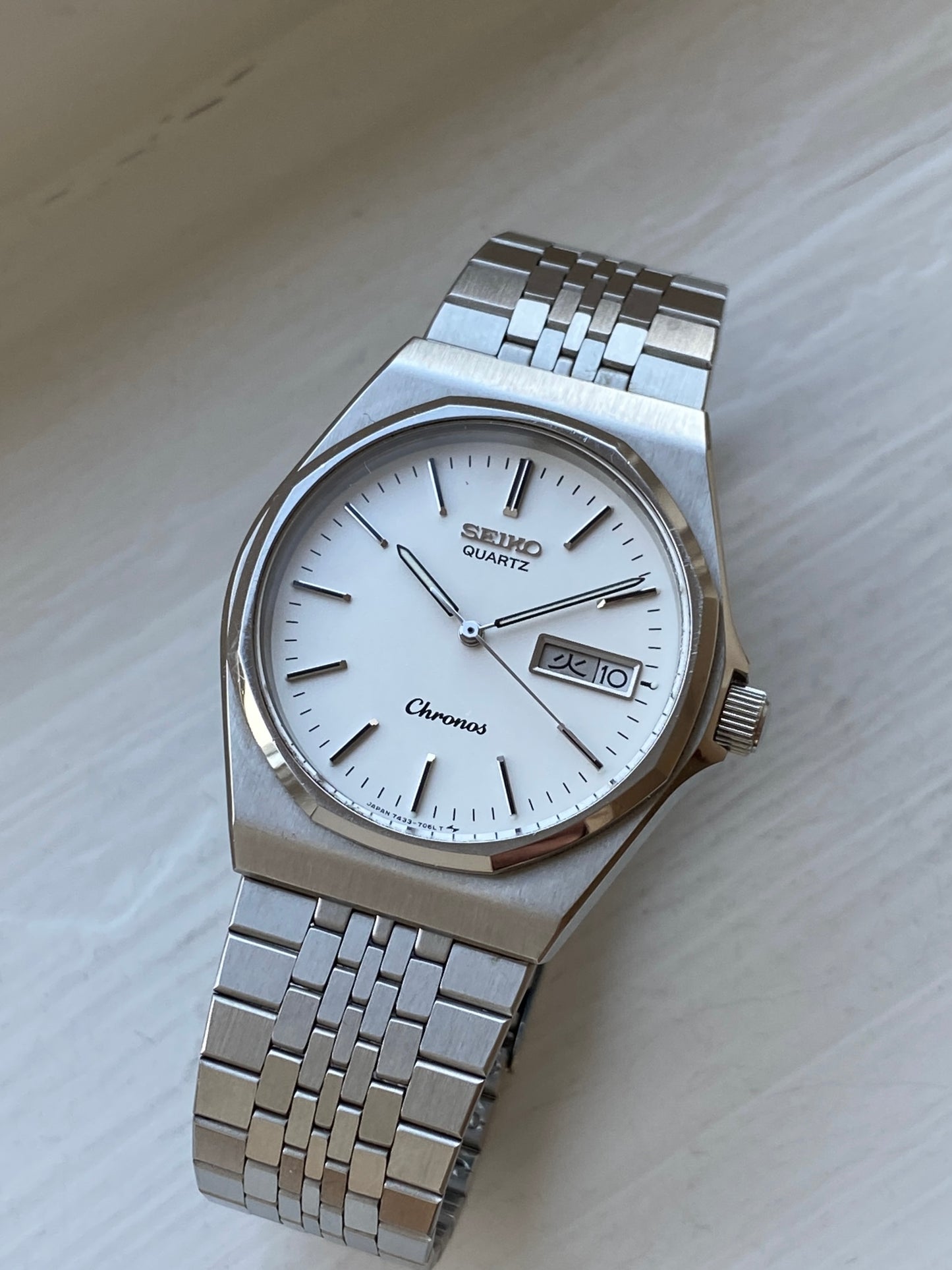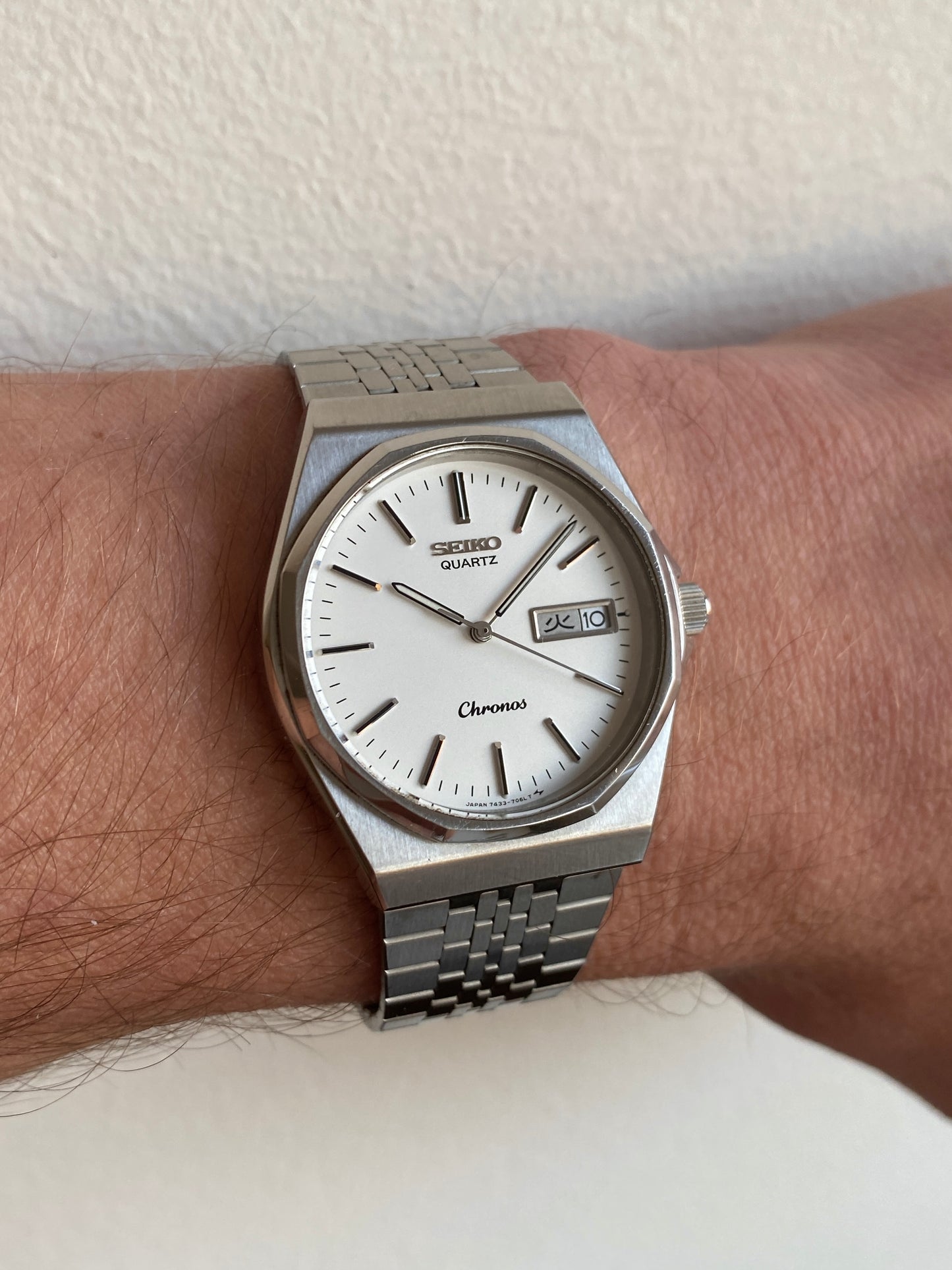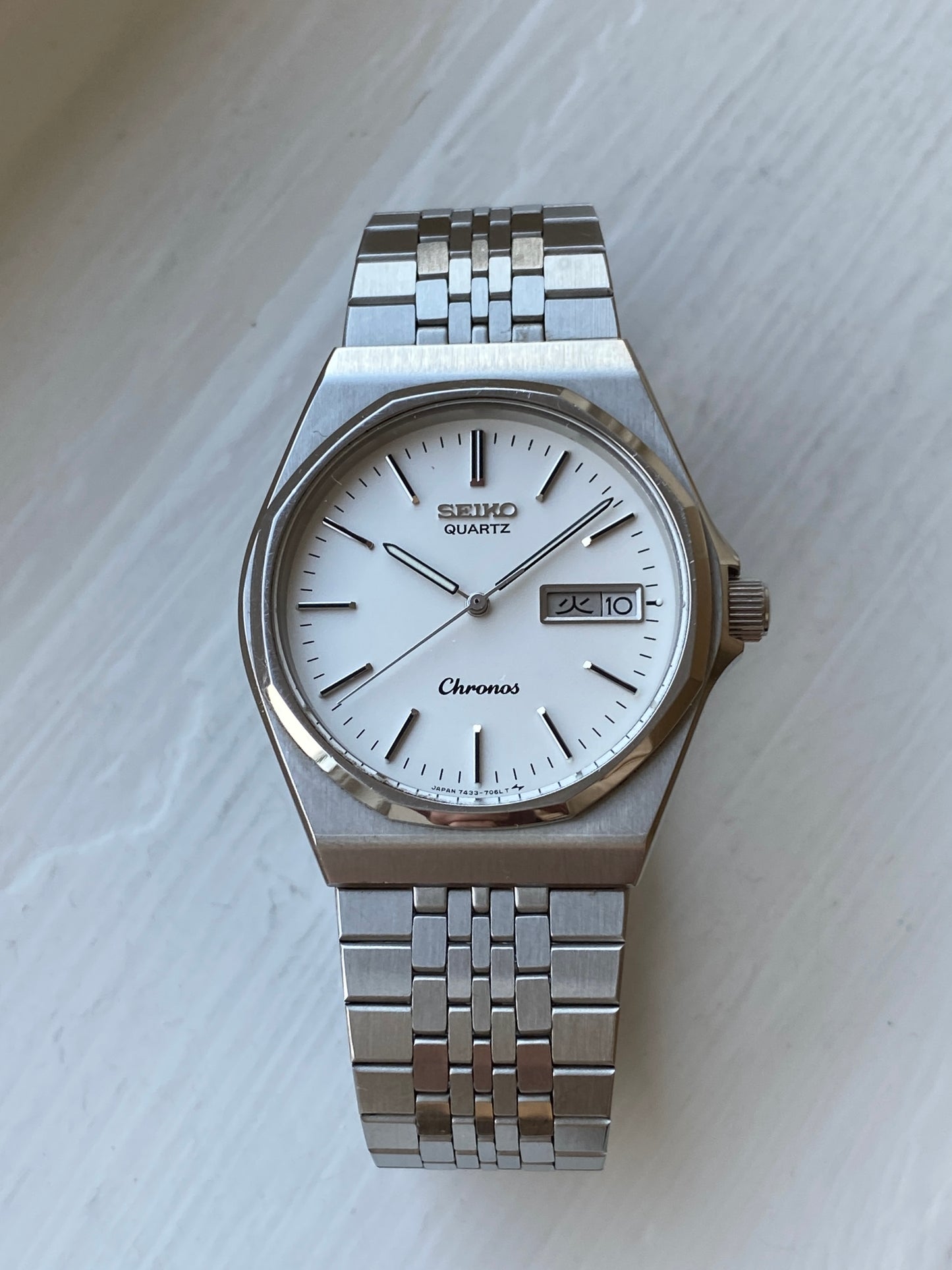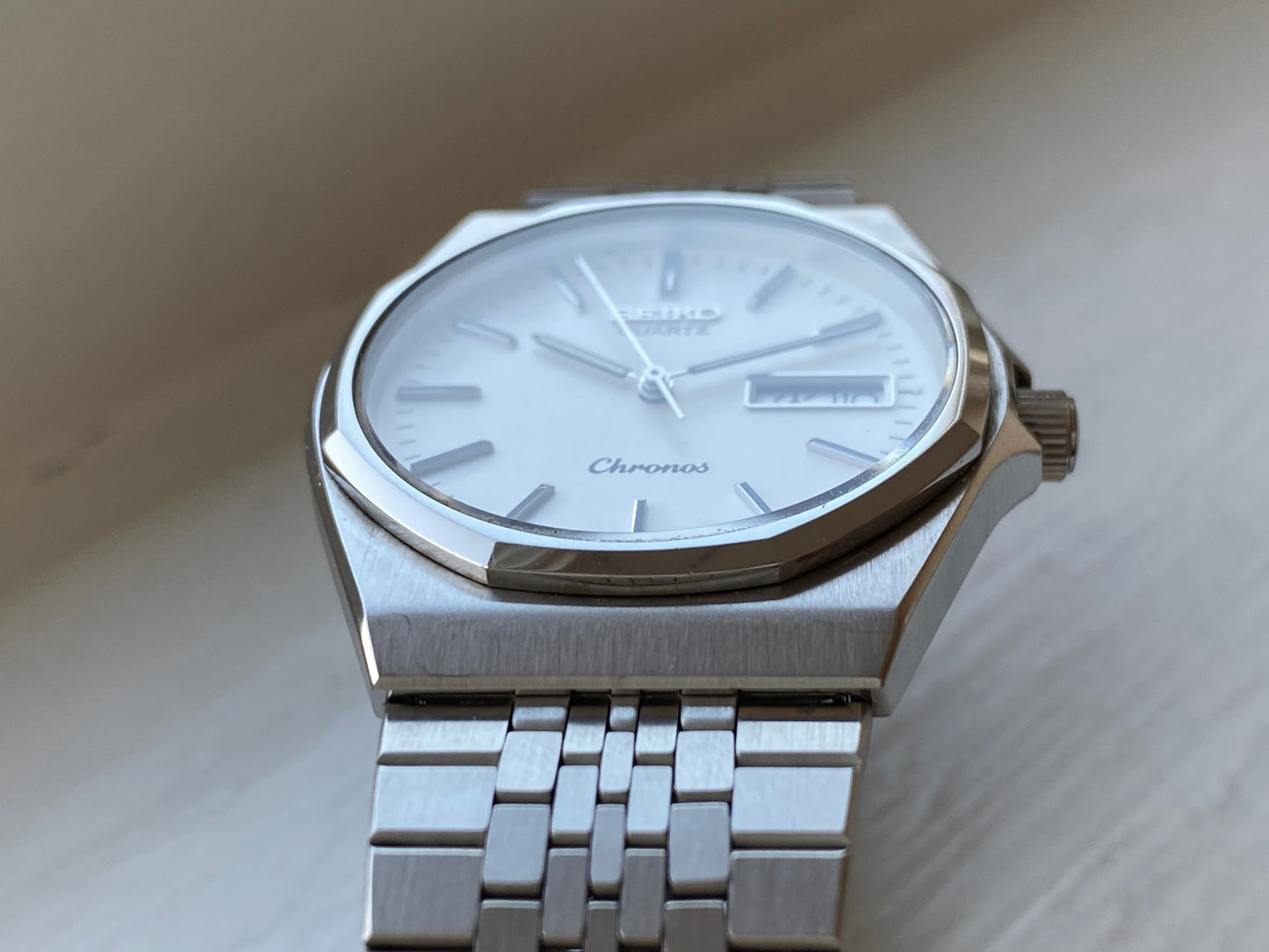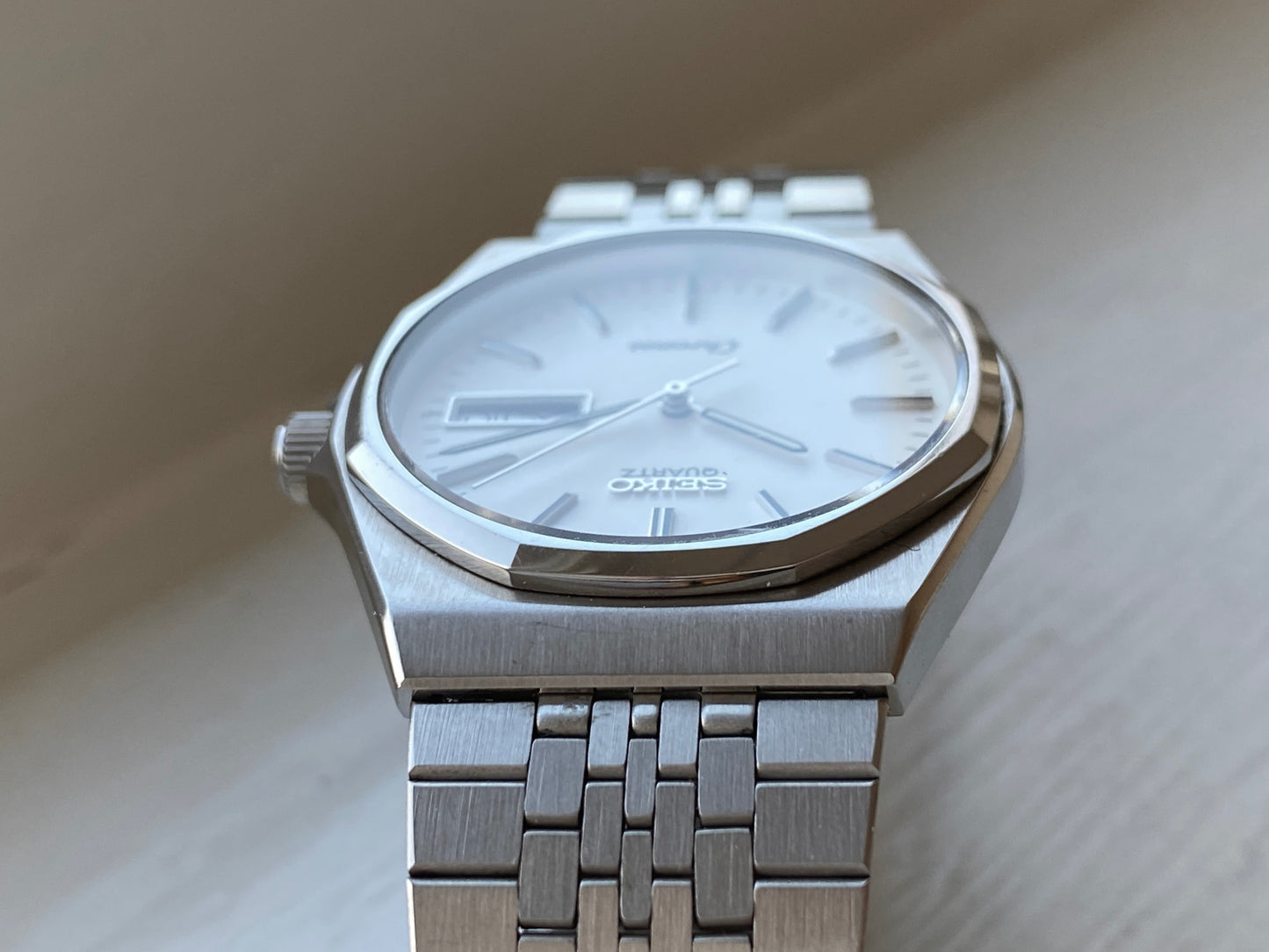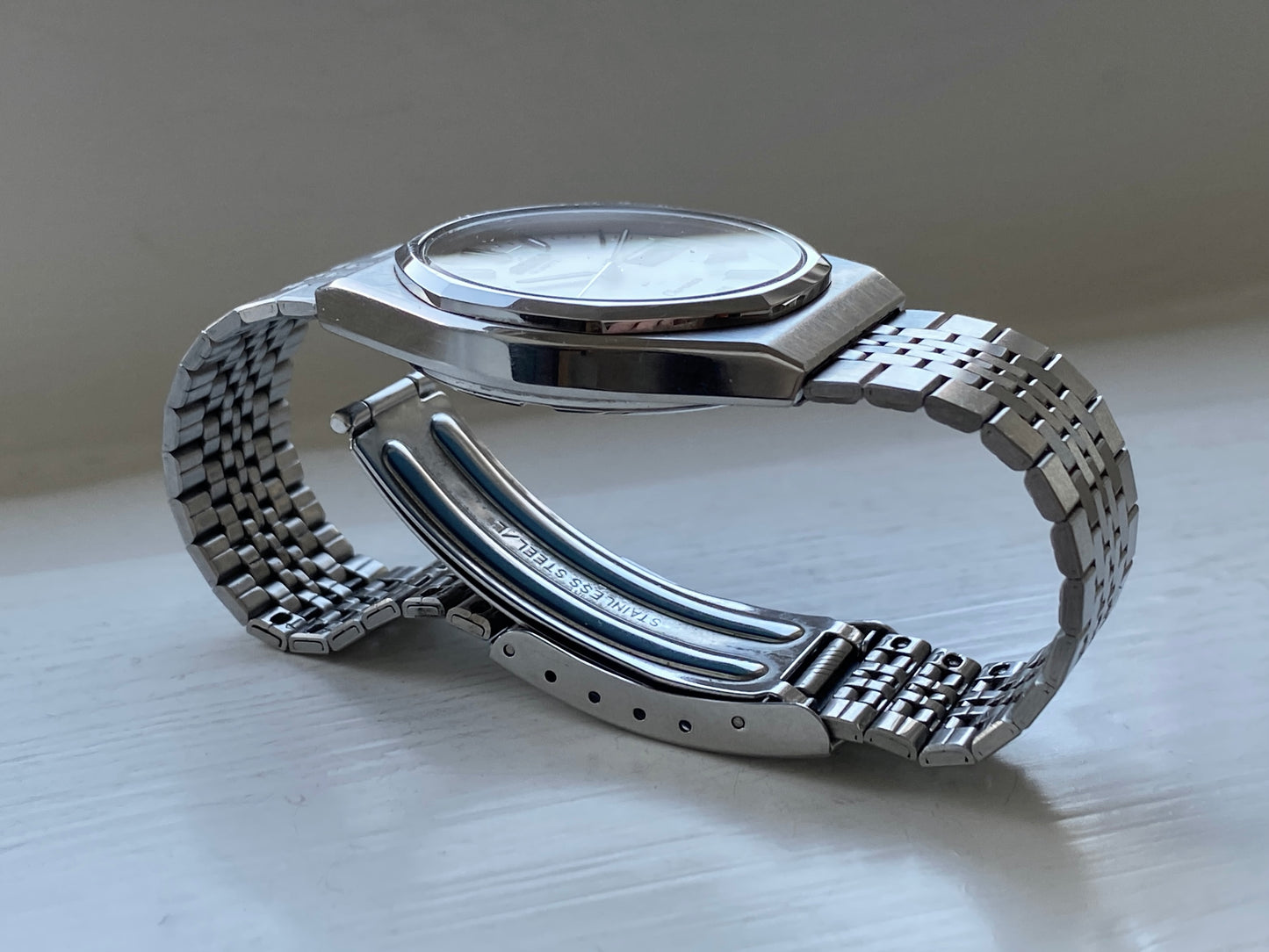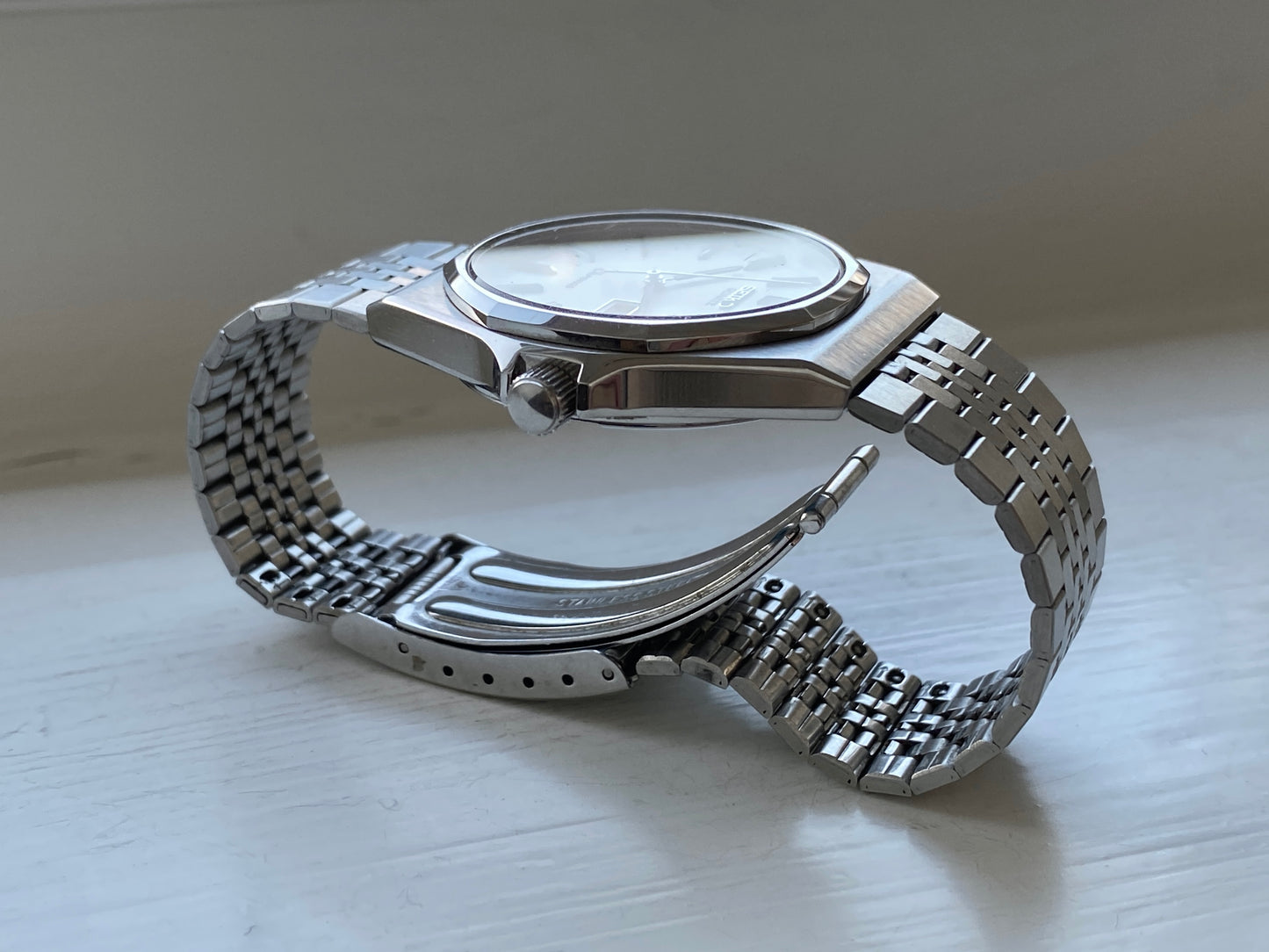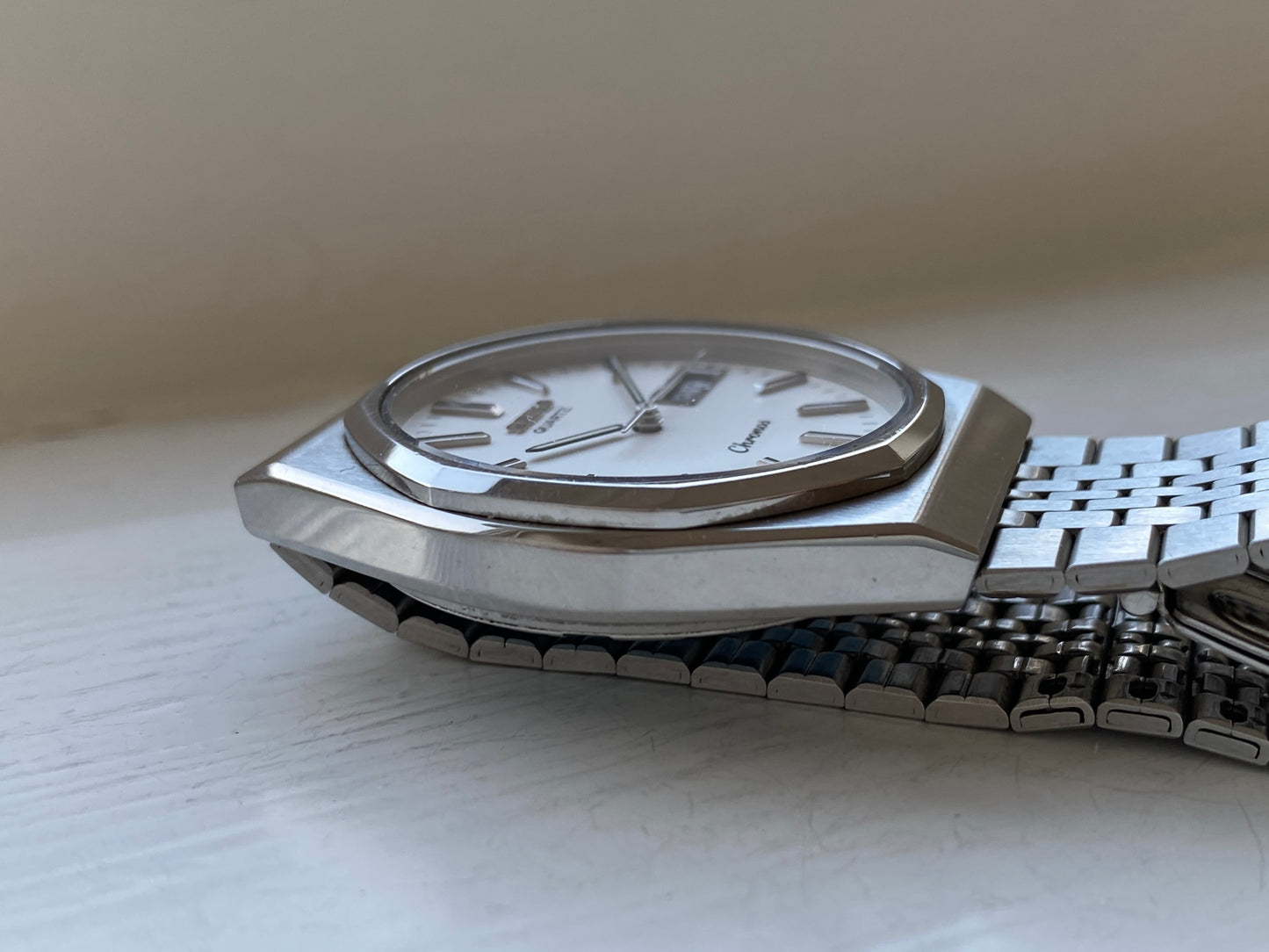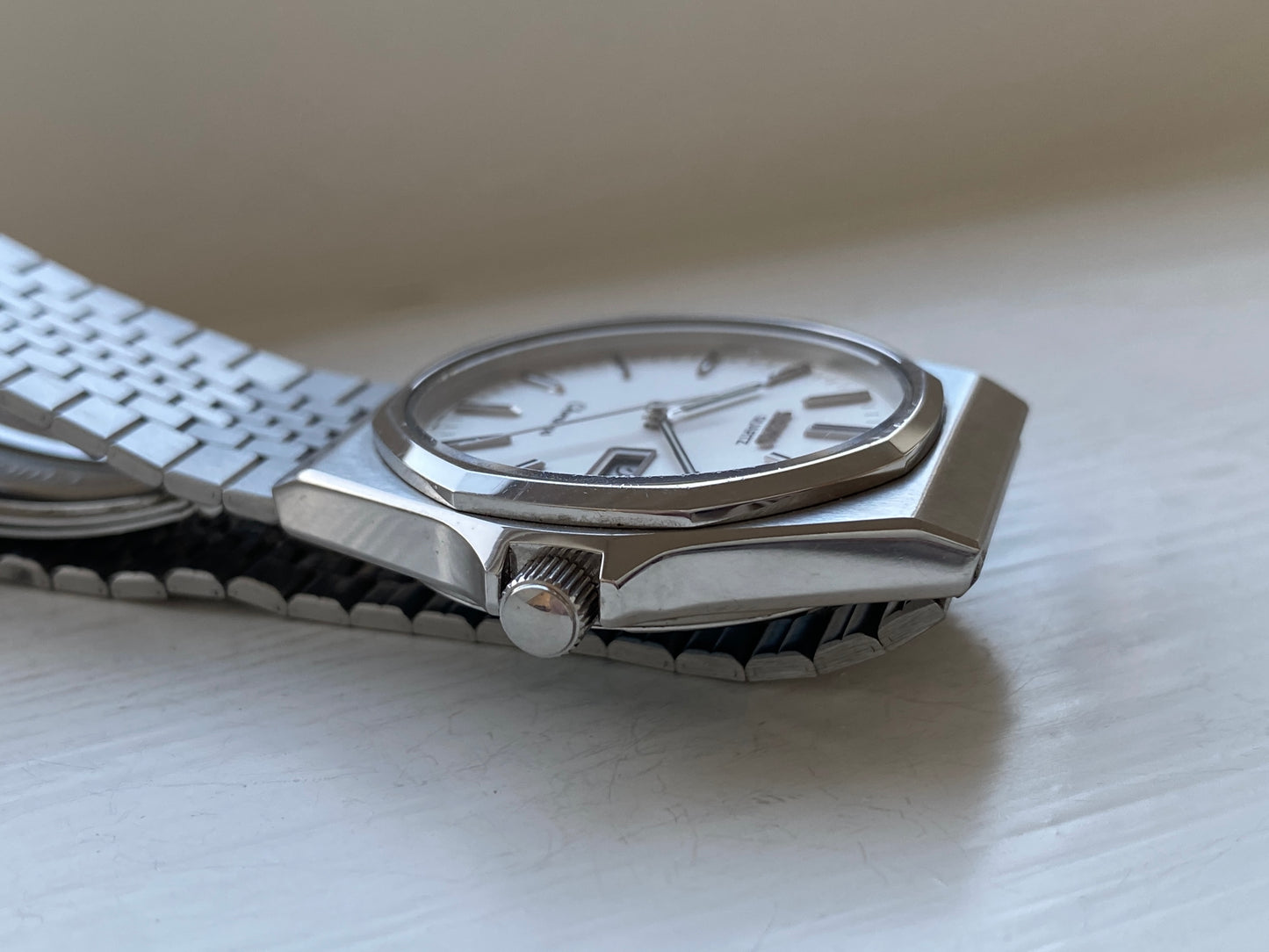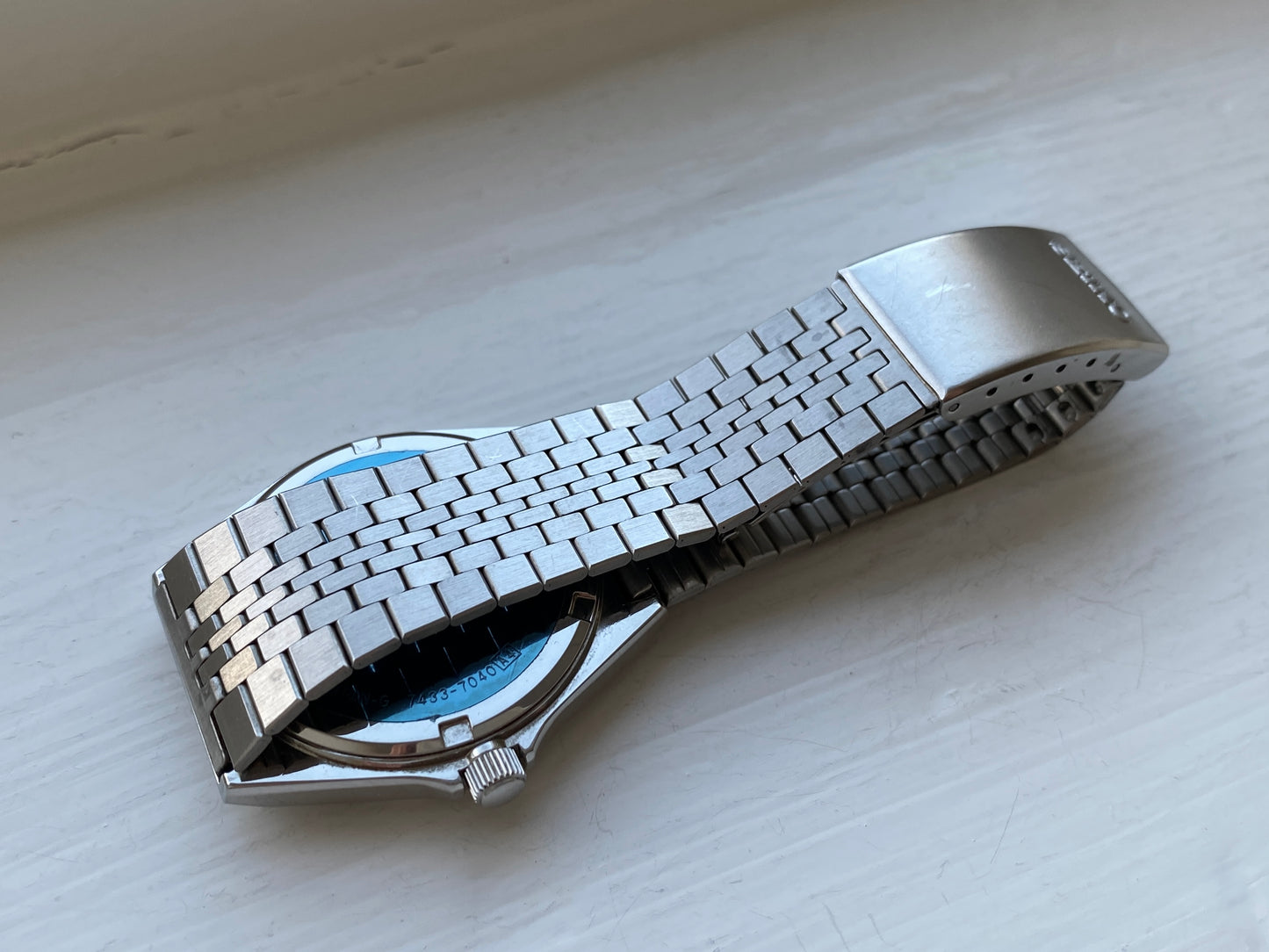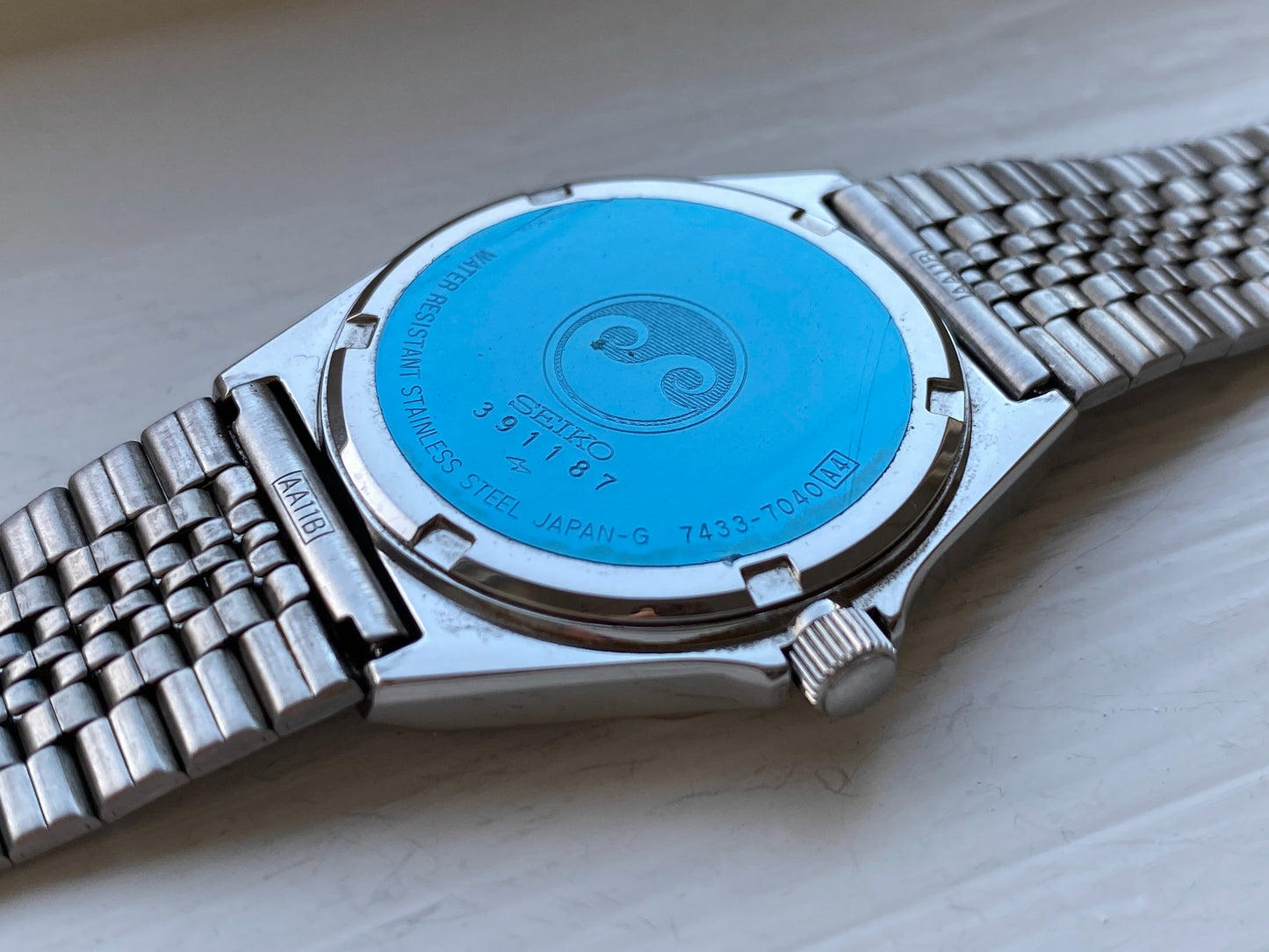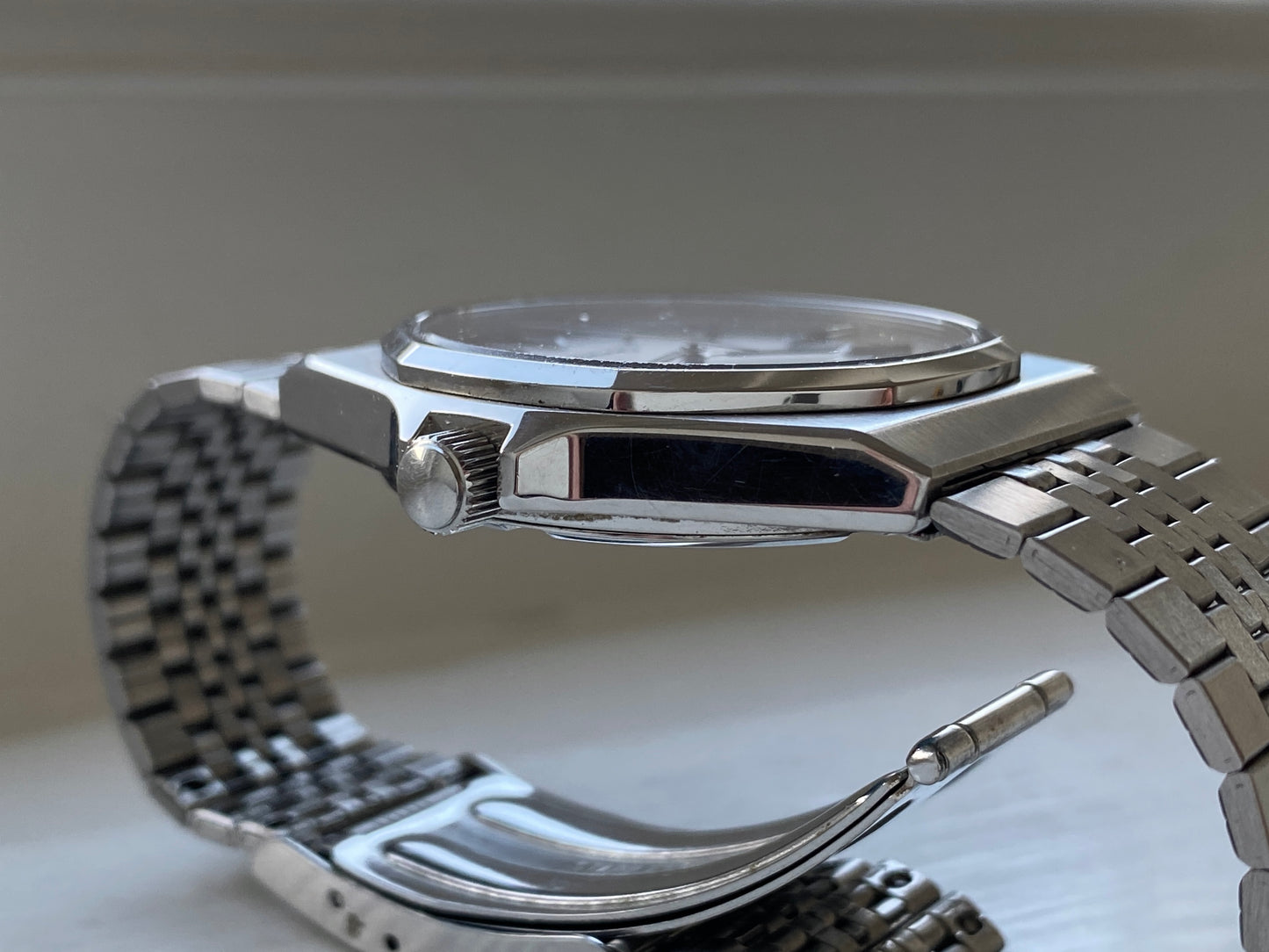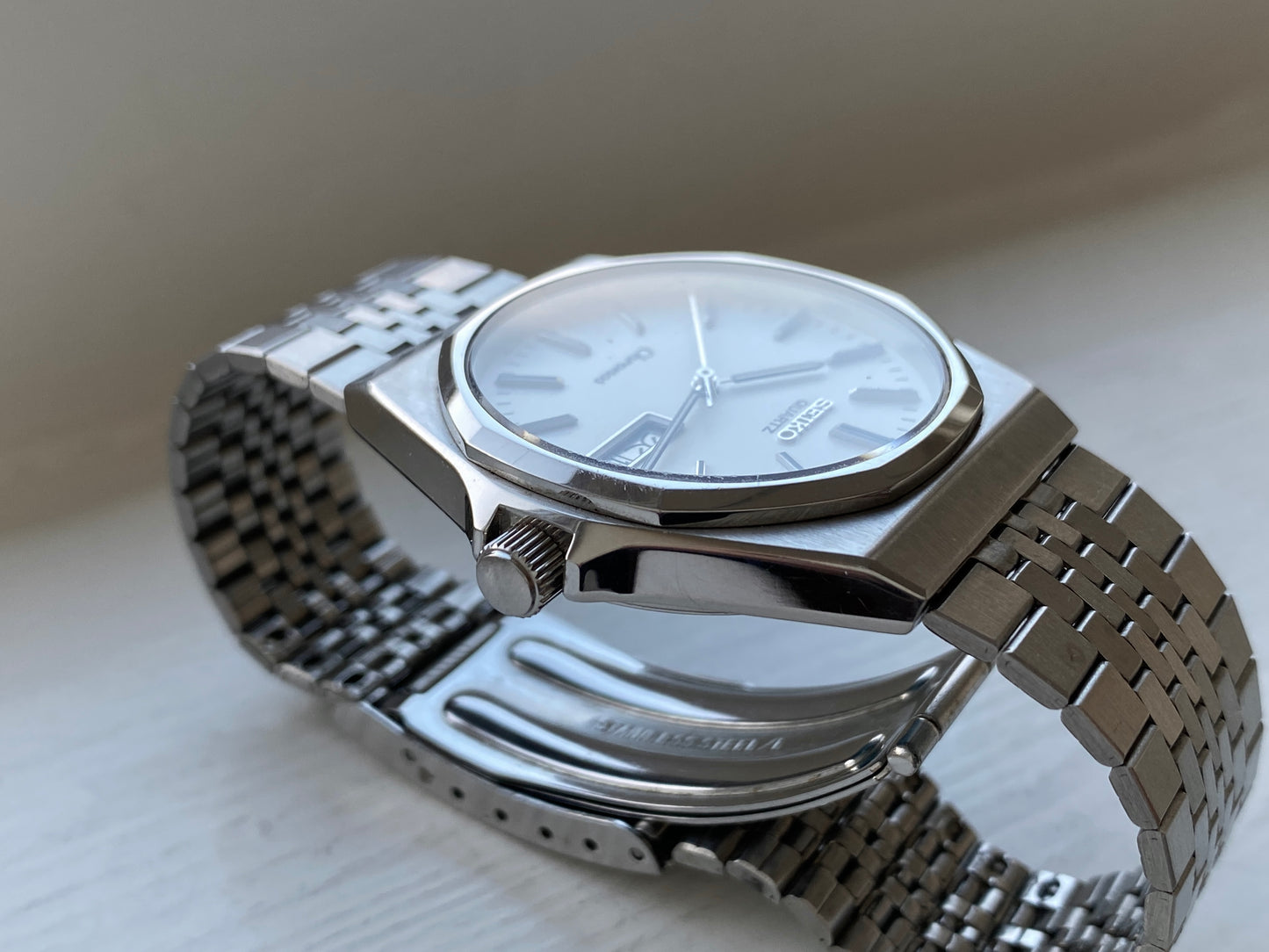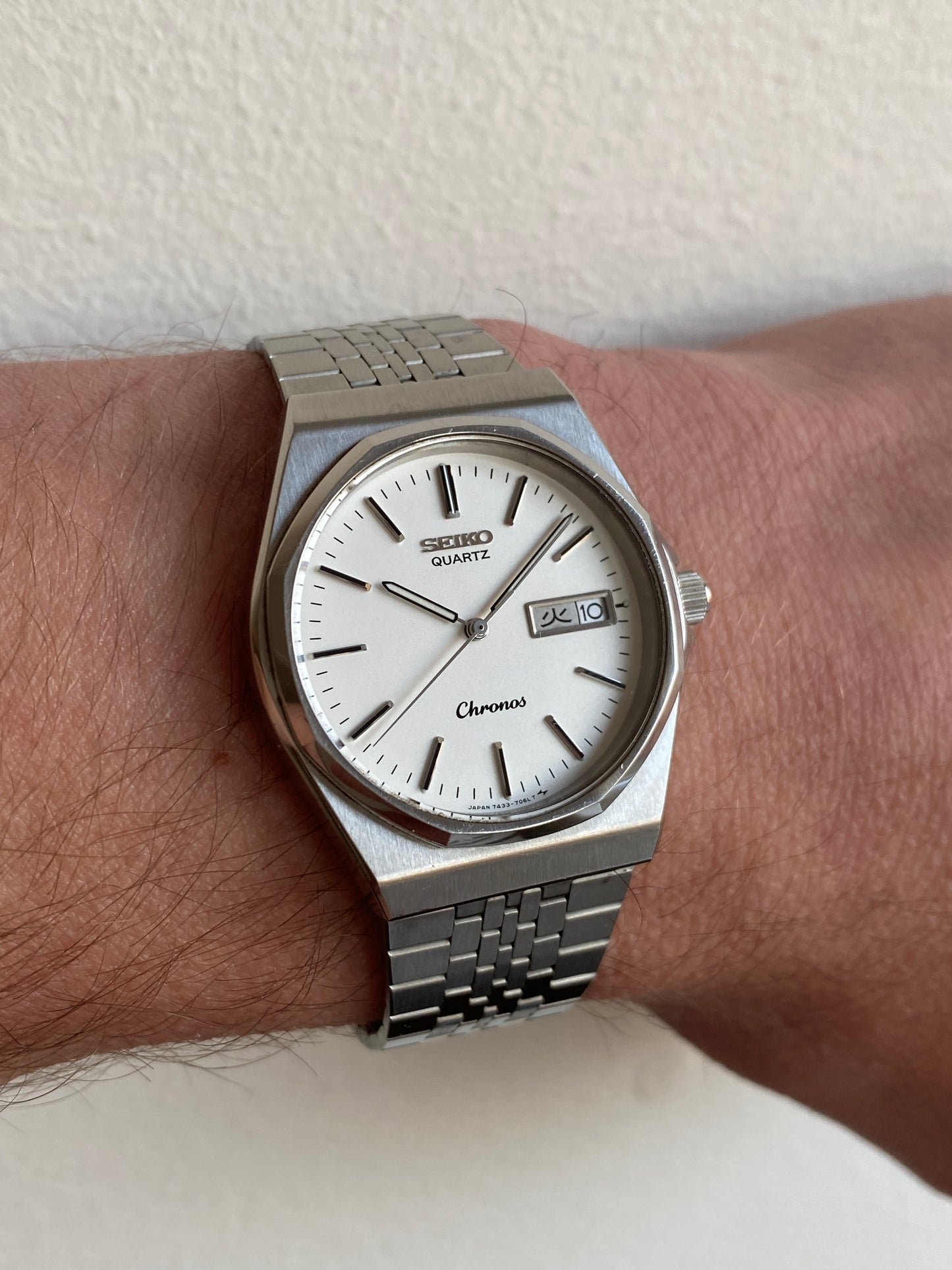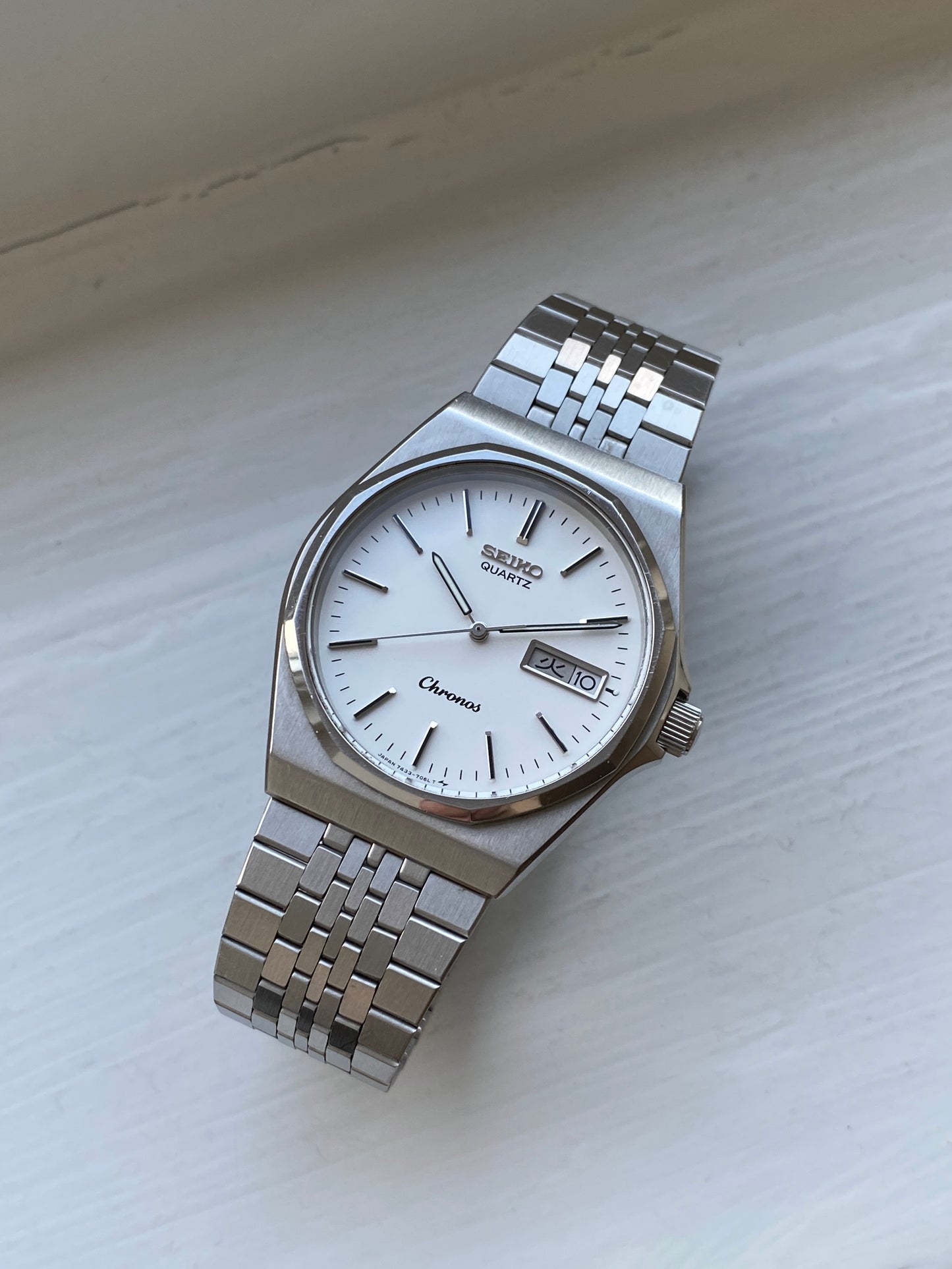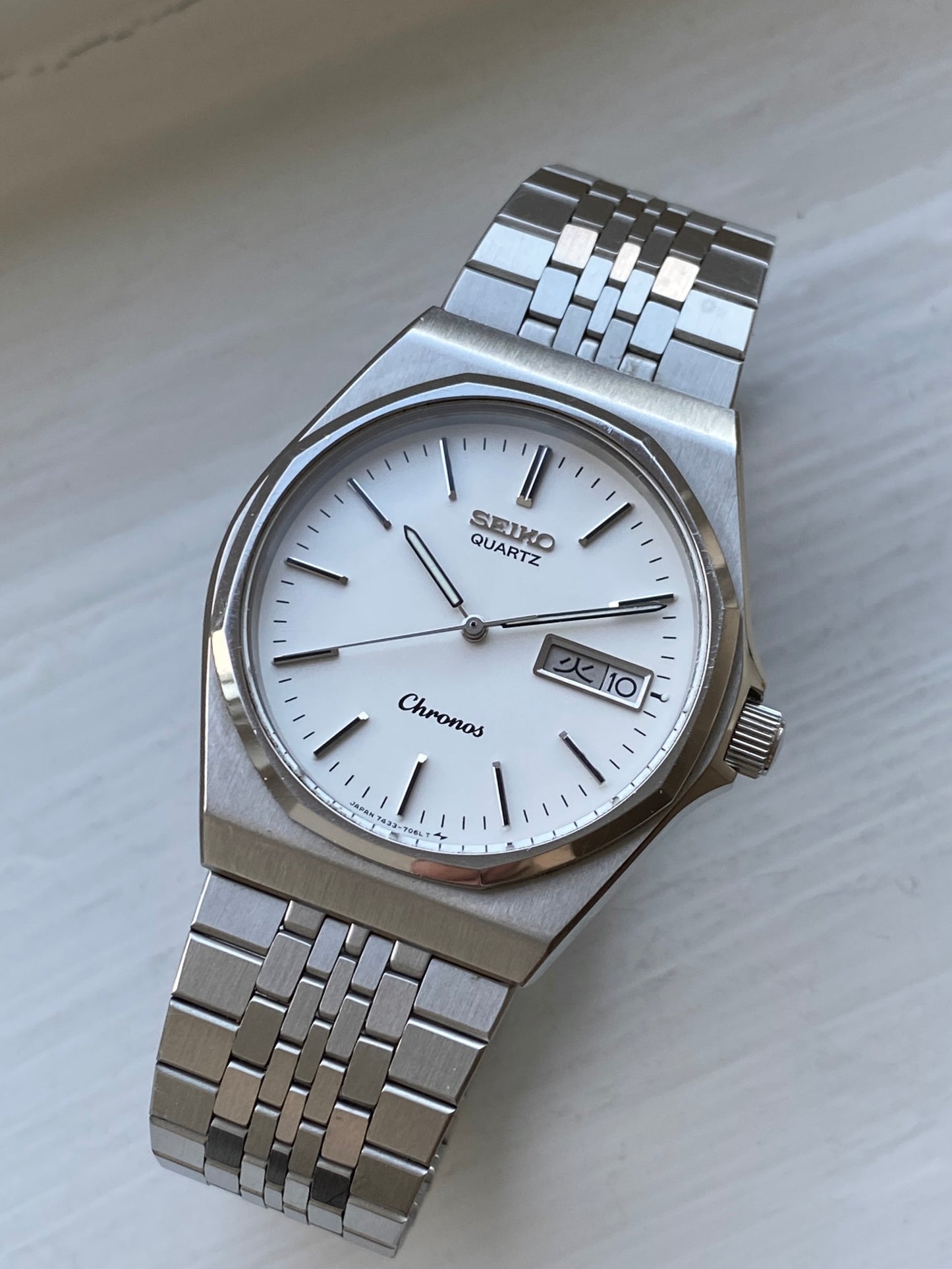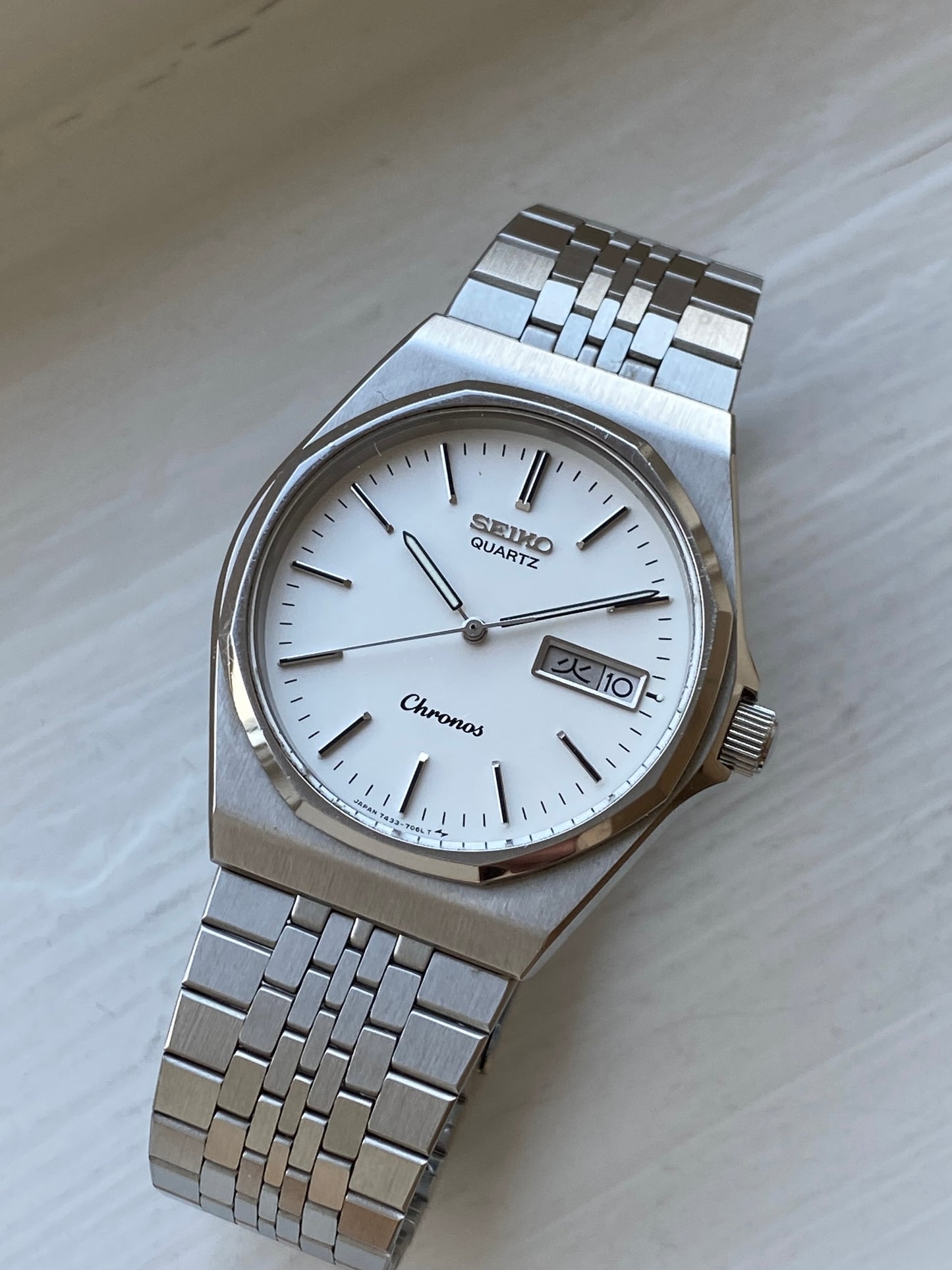Seiko Chronos 7433-7040 NOS
Seiko Chronos 7433-7040 NOS
Couldn't load pickup availability
|
Brand |
Seiko |
|
Model |
Chronos |
|
Reference |
7433-7040 |
|
Year |
1984 - September |
|
Movement |
Quartz |
|
Extras |
Original caseback sticker |
|
Dial |
White |
|
Jewels |
2 |
|
Case |
34mm |
|
Lugs |
18mm |
|
Day/date |
Day and date |
|
Crystal |
Mineral |
|
Bracelet |
AA11B | Fits up to a 17 cm wrist |
|
Performance |
+15 seconds per month |
|
Box/papers |
Not included |
|
Condition |
New old stock |
The watch
Seiko Chronos from 1984 in excellent condition. Simple and classy, made for the Japanese domestic market (JDM). It features a screw-down crown and a high-quality quartz movement. The day can be displayed in Japanese Kanji and English. Pretty thin, so it slides right under the cuff of your shirt.
The watch is in new old stock condition. There are very minimal scratches due to storage over 40 years. The crystal has one tiny scratch to the left of the Seiko logo, that is so small that it couldn’t be captured on the pictures. The bezel has some minor scratches on the upper right side, as well as the edge of the crystal. Overall, it’s in pretty good condition.
Do note that the original bracelet fits up to a 17 cm wrist, so measure your wrist before buying.
Details
The Seiko Cronos, introduced in 1958, was Seiko's first three-hand men's watch with a thinner, more precise movement, setting the stage for later iconic lines like the King Seiko and 44GS. Its elegant design featured a slim bezel, elongated indexes, and slender hands.
In the late 1970s, Seiko released the Chronos line of quartz watches, known for their refined, dressy appeal and durability, eventually evolving into the Seiko Spirit quartz line.
The quartz crisis
The "quartz crisis," also known as the "quartz revolution," refers to a period in the late 20th century when the Swiss watch industry faced significant upheaval due to the rise of quartz technology. This technological shift began in the 1960s and 1970s, primarily driven by Japanese companies like Seiko.
Quartz watches, which use a battery-powered quartz crystal to keep time, offered several advantages over traditional mechanical watches. They were more accurate, less expensive to produce, and required less maintenance. Seiko, a pioneer in quartz technology, introduced the world's first quartz watch, the Astron, in 1969. This innovation demonstrated that quartz watches could offer precision and affordability, challenging the long-standing dominance of Swiss mechanical watches.
The Swiss watch industry, which had long been revered for its craftsmanship and mechanical expertise, struggled to adapt to this new technology. Many Swiss companies initially underestimated the impact of quartz watches and were slow to innovate. As a result, they faced financial difficulties and market share losses. The quartz crisis led to the decline or bankruptcy of several traditional Swiss watchmakers and forced the industry to undergo significant restructuring.
Ultimately, the quartz crisis reshaped the watch industry, leading to a renewed focus on innovation and a blend of traditional and modern technologies. The Swiss watch industry eventually rebounded by incorporating quartz technology alongside their mechanical expertise.
